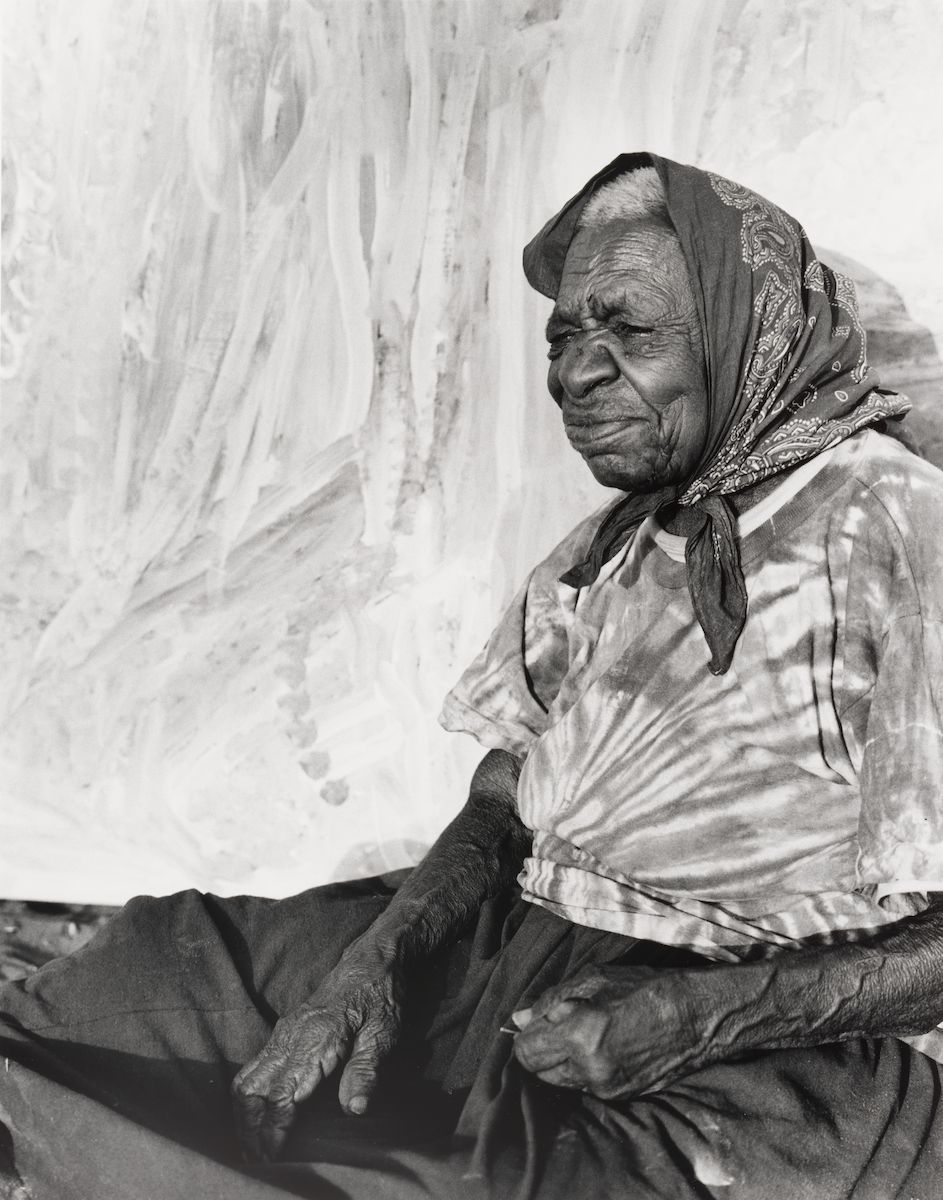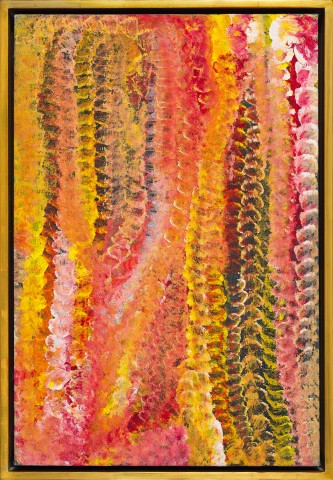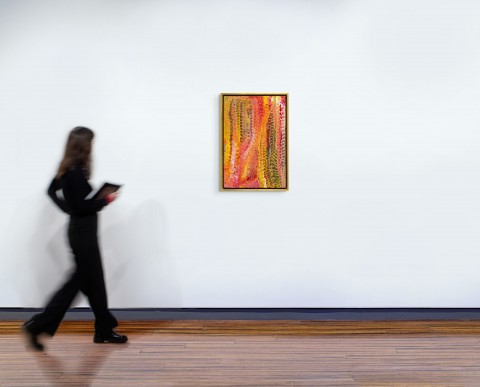UNTITLED, 1995
EMILY KAM KNGWARREYE
synthetic polymer paint on linen
76.0 x 51.0 cm
signed verso: Emlly [sic]
bears inscription verso: Delmore Gallery cat. 95A023
Commissioned in January 1995 by Delmore Gallery, via Alice Springs, Northern Territory
Private collection, Melbourne, acquired from the above
This work is accompanied by a certificate of authenticity from Delmore Gallery.
220043.jpg

Renowned for her colourful and vibrant recording of the ever-changing desert landscape in her father and grandfather’s Country of Alhalker, Emily Kngwarreye chronicled on canvas her custodial responsibility for the Yam and the Emu, reflecting Kngwarreye’s connection to country and Women’s ceremonies through body painting and dance. Located at the western edge of Utopia, this triangular shaped country was where Emily was born and where she lived in the traditional ways of the eastern Anmatyerr, following a way of life that had continued unchanged from long before European presence. Her mark-making recorded the seasonal variations, sometime subtle, often dramatic, of the harsh desert environment and the explosion of growth that occurred after rain. Referred to by Emily as the ‘green time’1, the desert would come to life with wildflowers carpeting the red earth and plants and grasses flourishing, supplying the women with seeds, tubers and fruit.
Through her use of pattern and colour, Kngwarreye had seemingly endless variations to call upon in the depiction of her country. Her paintings would often dissolve into fields of layered colour achieved through a build-up of dots upon dots as in Untitled, 1995. Here, meandering vertical lines of white, pink, yellow and red dots hover over an underlying grey ground. Kngwarreye bears witness though her painting to that abundance that carpets the earth after rain, sustaining country and celebrating the hardiness and fertility of their bush tucker and food sources, and in turn, her people’s own resilience.
1. Isaacs, J., ‘Amatyerre Woman’ in Isaacs, J. et al., Emily Kame Kngwarreye Paintings, Craftsman House, Sydney, 1998, p. 13
CRISPIN GUTTERIDGE


